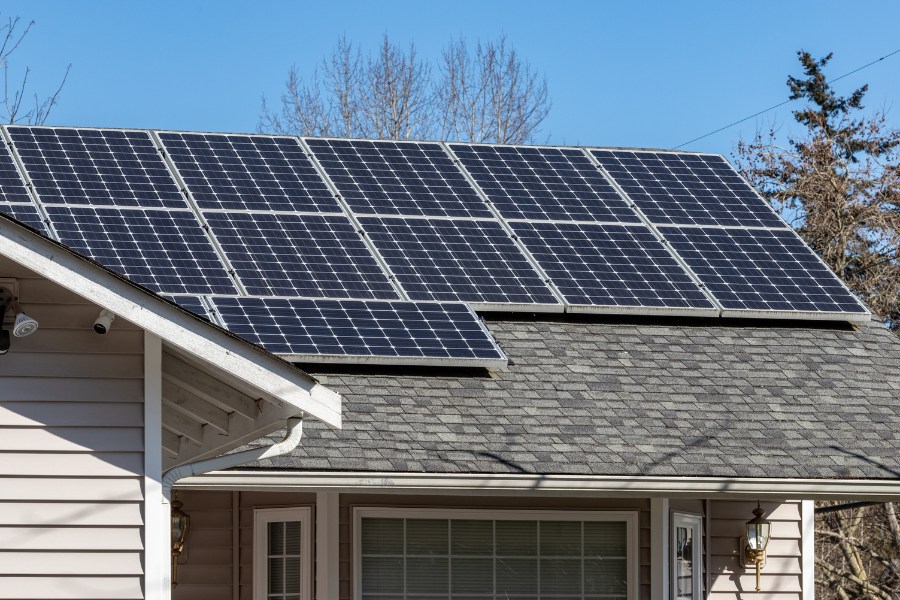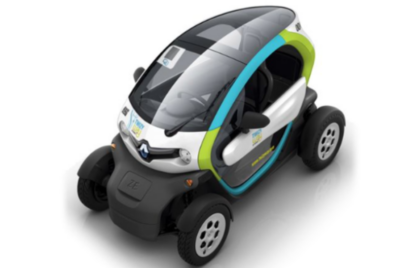How Do We Tackle The Energy Crunch?
From Crisis to Solution: Addressing the Energy Crunch Head-On
As an electrical engineer and a staunch advocate of sustainable energy solutions, I am deeply concerned about the global “Energy Crunch” that we find ourselves in today. In this article, I will provide recommended solutions to the question: How do we tackle the energy crunch?
I will shed light on what the energy crunch entails, the pivotal role solar energy plays in alleviating this crisis, and provide practical advice for individuals and businesses looking to transition to solar power.
Understanding the Energy Crunch
What is the energy crunch?
The term “energy crunch” refers to the growing disparity between our increasing energy demands and the limited supply of fossil fuels that have been our primary source of power for decades.
Causes and consequences
Multiple factors contribute to this crisis, including population growth, industrialization, and climate change. As fossil fuel reserves dwindle, we face rising energy costs, environmental degradation, and the risk of energy shortages.
It is therefore essential to deal with the question: How do we tackle the energy crunch?
The Role of Solar Energy
Harnessing the Power of the Sun
Solar energy represents a revolutionary shift in our approach to power generation. At its core, it is the art of harnessing the inexhaustible energy of the sun, a colossal nuclear fusion reactor situated 93 million miles away from Earth. Every day, the sun bathes our planet in an abundance of energy, providing us with a staggering 173,000 terawatts of energy—more than 10,000 times the world’s total energy use. Harnessing this immense resource holds the key to a cleaner, more sustainable future.
Abundant and Sustainable Resource
The sun’s energy is not only abundant but also sustainable on an astronomical timescale. Unlike fossil fuels, which are finite and subject to depletion, the sun’s power source is projected to last for billions of years. This ensures a continuous and virtually unlimited supply of energy for generations to come, making it a reliable solution to our energy needs.
Eco-Friendly Alternative to Fossil Fuels
One of the most compelling aspects of solar energy is its eco-friendliness. When we convert sunlight into electricity using solar panels, we do so without emitting harmful greenhouse gases or other pollutants. Unlike the burning of fossil fuels, which releases carbon dioxide and contributes to global warming and air pollution, solar energy production is entirely clean and does not contribute to environmental degradation.
Sustainable and Eco-Friendly Solution
Solar energy systems are at the forefront of the global effort to transition to a greener and more sustainable energy landscape. They offer a multitude of benefits that extend beyond reducing our reliance on finite energy sources.
Minimal Environmental Impact
Solar energy systems operate with minimal environmental impact. Solar panels, once installed, have a relatively low environmental footprint. The production of solar panels does generate some emissions, but these are typically offset within a few years of operation through clean energy generation.
Zero Greenhouse Gas Emissions
One of the most significant advantages of solar power is that it emits zero greenhouse gases during electricity generation. By reducing our reliance on fossil fuels for electricity, we directly contribute to reducing carbon emissions and combating climate change. This eco-friendly approach aligns with global efforts to limit temperature rise and preserve the planet for future generations.
A Vital Component of Sustainability
In the quest for sustainability, solar energy is a vital component. Its ability to provide clean, renewable power aligns with the broader goals of reducing pollution, conserving natural resources, and mitigating the environmental impact of human activities. As we transition away from fossil fuels and embrace solar energy, we take a substantial step toward creating a more sustainable and habitable planet.
In summary, the role of solar energy is paramount in addressing the energy challenges of our time. By harnessing the virtually limitless power of the sun, we not only reduce our reliance on finite energy sources but also contribute to a cleaner, more sustainable future. Solar energy’s minimal environmental impact and zero greenhouse gas emissions position it as a cornerstone of our efforts to combat climate change and create a greener world for generations to come.
Solving the Energy Crunch with Solar
Benefits of solar energy
The short answer to: How do we tackle the energy crunch? is with Solar power.
Solar power offers numerous advantages, including reduced electricity bills, energy independence, and a smaller carbon footprint. It is a clean and renewable energy source with immense potential.
How solar energy works
Solar panels, also known as photovoltaic (PV) panels, are at the heart of solar energy systems. They work on a principle called the photovoltaic effect, a phenomenon first discovered in the 19th century. Here’s a breakdown of how this process works:
1. Absorption of Sunlight
It all begins with sunlight, the primary source of energy for our planet. When sunlight hits the solar panels, it consists of tiny packets of energy called photons. The solar panels are specially designed to capture these photons.
2. Creation of Electron-Hole Pairs
The photons absorbed by the solar panel’s photovoltaic cells contain energy that can “excite” electrons in the material. When these photons collide with the electrons in the PV cells, they transfer their energy to the electrons, elevating them to a higher energy state. This creates what are called “electron-hole pairs.”
3. Generation of Direct Current (DC) Electricity
The movement of these excited electrons creates an electric current within the solar cell material. This electric current is in the form of direct current (DC) electricity. Essentially, the solar panel has transformed the energy from sunlight into electrical energy.
4. Conversion into Usable Alternating Current (AC)
While DC electricity can be used for some applications (like charging batteries), most of our household appliances and the electrical grid use alternating current (AC). To make the electricity generated by the solar panels compatible with our needs, an inverter is used to convert the DC electricity into AC electricity.
5. Utilization and Distribution
Once converted into AC electricity, it can be used to power homes, businesses, and various electrical appliances and devices. If your solar energy system generates more electricity than you use, the excess can be fed back into the grid, often earning you credits on your utility bill through a process called net metering.

Overcoming Common Solar Energy Challenges
Initial Costs and Long-Term Savings
Addressing the Misconception of Solar Energy Costs
One of the prevailing misconceptions about solar energy is that it is expensive to install. While it’s true that there are upfront costs associated with purchasing and installing solar panels and related equipment, it’s essential to consider the broader financial picture.
The Long-Term Financial Benefits of Solar Installations
Solar energy installations are, in fact, a long-term investment with significant financial benefits. Here’s how:
• Reduced Electricity Bills: Once solar panels are installed, they start generating electricity, reducing your dependence on grid electricity. This translates into substantial savings on your monthly electricity bills.
• Return on Investment (ROI): The initial investment in solar panels can often be recouped within a few years through these savings. Afterward, your solar energy system continues to generate electricity at little to no ongoing cost, providing a return on your initial investment.
• Net Metering: Many regions offer net metering programs that allow you to sell excess electricity generated by your solar panels back to the grid. This not only offsets your electricity costs but can also result in credits on your utility bill.
• Tax Incentives and Rebates: Governments and local authorities often provide financial incentives, such as tax credits and rebates, to encourage the adoption of solar energy. These incentives can significantly offset the initial costs.
• Increased Property Value: Homes equipped with solar panels tend to have higher property values. If you decide to sell your home, the solar energy system can make it more attractive to potential buyers.
• Environmental Benefits: Beyond the financial savings, solar energy installations contribute to reducing greenhouse gas emissions and your carbon footprint, which can have long-term benefits for the environment and public health.
In summary, while there are initial costs associated with installing solar panels, it’s crucial to view solar energy as a long-term investment rather than an expense. The financial benefits, including reduced electricity bills, tax incentives, and increased property value, far outweigh the upfront investment, making solar energy an economically sound and environmentally friendly choice.
Solar Panel Efficiency and Maintenance
Factors Impacting Solar Panel Efficiency
Solar panel efficiency is a critical factor in maximizing the energy output of your solar energy system. Several factors can impact the efficiency of solar panels:
• Angle and Orientation: Proper placement of solar panels to capture the most sunlight is essential. Panels should be positioned at the optimal angle and oriented to face the sun.
• Shading: Even partial shading of solar panels can significantly reduce their efficiency. Ensuring that panels are not shaded by nearby trees, buildings, or other obstructions is vital.
• Dirt and Debris: Dust, dirt, and debris can accumulate on the surface of solar panels, reducing their ability to absorb sunlight. Regular cleaning and maintenance are necessary to keep panels operating at peak efficiency.
• Temperature: Solar panels can become less efficient at extremely high temperatures. Proper ventilation and spacing between panels can help mitigate this issue.
The Importance of Regular Maintenance
To ensure that solar panels continue to perform optimally and have a long lifespan, regular maintenance is essential. Here’s why:
• Cleaning: Periodic cleaning of solar panels to remove dust, dirt, and debris is crucial. Cleaning can be as simple as rinsing panels with a hose or using a soft brush to remove stubborn dirt.
• Inspections: Regular visual inspections can help identify any issues such as loose connections, damaged panels, or signs of wear and tear.
• Professional Maintenance: It’s advisable to schedule professional maintenance checks periodically to address any technical issues, ensure electrical connections are secure, and verify overall system performance.
• Inverter Maintenance: Inverters, which convert DC electricity to AC, may require maintenance or replacement over time. Regular monitoring of inverter performance is essential.
By addressing these factors and incorporating regular maintenance into your solar energy system’s upkeep, you can maximize its efficiency and extend its lifespan, ultimately ensuring a consistent and reliable source of clean energy for years to come.
In conclusion, the challenges associated with solar energy, including initial costs and solar panel efficiency, can be effectively addressed through a comprehensive understanding of the long-term financial benefits and the implementation of regular maintenance practices.
Solar energy offers not only environmental benefits but also substantial financial savings over the long run, making it a sound investment for homeowners and businesses alike.

Steps to Transition to Solar Energy
Assessing Your Energy Needs
Guidance on Evaluating Your Energy Consumption
The first crucial step in transitioning to solar energy is to assess your energy needs accurately. Understanding your energy consumption patterns allows you to determine the appropriate size and type of solar energy system to meet your specific requirements.
1. Review Your Utility Bills: Start by examining your past utility bills, ideally covering a full year or more. This historical data will provide insights into your energy consumption trends, including seasonal variations.
2. Identify Peak Usage: Identify periods of high energy consumption. These peak usage times will help size your solar energy system to ensure it can cover your most significant energy demands.
3. Calculate Your Energy Goals: Determine your energy goals. Are you looking to offset a portion of your energy bills, or do you aim to achieve complete energy independence? Setting clear objectives will guide your solar system’s design.
4. Consider Future Needs: Think about any potential changes in your energy needs, such as adding new appliances or expanding your home. Your solar system should accommodate future growth.
5. Solar Potential: Assess the solar potential of your location. Factors like the amount of sunlight your area receives throughout the year will influence the efficiency of your solar panels.
Finding the Right Solar Installation Company
Tips for Selecting a Reputable Solar Installation Provider
Once you have a clear understanding of your energy needs and goals, the next critical step is to find a reliable and experienced solar installation company to make your transition to solar energy a success. Here are some tips for selecting the right provider:
1. Research and Compare: Start by researching multiple solar installation companies in your area. Compare their experience, customer reviews, and track record.
2. Verify Licensing and Certification: Ensure that the company is licensed and certified to install solar panels in your region. Certification from organizations like the North American Board of Certified Energy Practitioners (NABCEP) is a good indicator of expertise.
3. Ask for References: Request references from the company and reach out to previous customers to inquire about their experiences with the installation process and system performance.
4. Evaluate Warranty and Support: Review the warranties offered by the company, both for the solar panels and the installation work. A reputable company should stand behind its products and services.
5. Financial Stability: Assess the financial stability of the company. A financially stable company is more likely to honor warranties and provide ongoing support.
6. Customized Solutions: Choose a company that offers customized solar solutions tailored to your energy needs and goals. They should conduct an on-site assessment to design the most efficient system for your property.
7. Transparency: The company should be transparent about the costs, financing options, and potential savings associated with your solar energy system.
8. Installation Timeline: Inquire about the estimated timeline for installation. A reliable company should provide a clear schedule for the installation process.
9. Maintenance and Monitoring: Ask about maintenance services and system monitoring options. Regular maintenance is essential to ensure your system operates efficiently over time.
10. Get Multiple Quotes: Don’t hesitate to get quotes from several solar installation companies. This will help you compare pricing and services to make an informed decision.
Transitioning to solar energy is a significant investment and a long-term commitment. Selecting the right solar installation company is crucial to ensuring a smooth and successful transition. By thoroughly assessing your energy needs and carefully choosing a reputable provider, you can enjoy the benefits of clean and sustainable solar power for years to come.
Solar Energy Incentives and Policies
Government incentives and rebates
Governments realize that Solar is a means to tackle the energy crunch.
Explore the various Government incentives and policies in your area that encourage the adoption of solar energy, including tax credits and rebates.
Net Metering and Grid Integration
Understanding How Net Metering Works
Net metering is a policy and billing arrangement that allows solar energy system owners to feed excess electricity they generate back into the grid, essentially turning their electric meters into a two-way communication system. This process involves several key components:
1. Solar Energy Generation: When your solar panels generate electricity, it first powers your home’s electrical needs. Any excess electricity produced beyond what your home requires is sent back to the grid.
2. Bidirectional Metering: In a net metering setup, your utility company installs a bidirectional meter. This specialized meter can measure both the electricity you consume from the grid and the electricity you send back to the grid.
3. Crediting System: For the excess electricity you supply to the grid, you receive credits on your utility bill. These credits offset the electricity you draw from the grid when your solar panels aren’t producing enough electricity to meet your needs, such as during the night or on cloudy days.
4. Utility Billing: Your utility company bills you based on the net difference between the electricity you consume from the grid and the credits you accumulate for surplus electricity fed back to the grid. If you generate more electricity than you use over a billing period, you may receive a credit or payment from the utility.
5. Energy Independence: Net metering enhances energy independence by allowing you to rely on your solar energy system for a significant portion of your electricity needs. This reduces dependence on fossil fuels and conventional grid electricity.
6. Environmental Benefits: By using and sharing clean, renewable solar energy through net metering, you contribute to reducing greenhouse gas emissions and environmental degradation.
It’s worth noting that net metering policies and regulations can vary by region and utility provider. Therefore, it’s essential to check with your local utility company and understand the specific net metering rules and rates applicable in your area. Additionally, some areas offer more favorable net metering policies than others, making it important to consider these factors when deciding to invest in a solar energy system.
Conclusion
In conclusion, the energy crunch is a pressing global issue that demands immediate attention and action.
How do we tackle the energy crunch? Solar energy emerges as a sustainable, cost-effective, and eco-friendly solution to mitigate this crisis. Transitioning to solar power not only benefits the environment but also offers significant savings and energy independence.
Frequently Asked Questions (FAQs)
1. Is solar energy suitable for all regions?
• Solar energy can be harnessed in most regions, but the efficiency of solar panels may vary depending on factors like sunlight exposure and climate.
2. What are the initial costs of installing solar panels?
• The initial costs vary depending on the size and type of the solar system. However, government incentives and long-term savings make it an attractive investment.
3. How can I find a reliable solar installation company?
• Research and seek recommendations, look for certifications, and check customer reviews to find a reputable solar installation provider.
4. What government incentives are available for solar energy adoption?
• Incentives include tax credits, rebates, and grants at the federal, state, and local levels to encourage solar adoption.
5. How can we tackle the energy crunch?
• Solar energy emerges as a sustainable, cost-effective, and eco-friendly solution to mitigate the energy crunch crisis. Transitioning to solar power not only benefits the environment but also offers significant savings and energy independence to its users.




